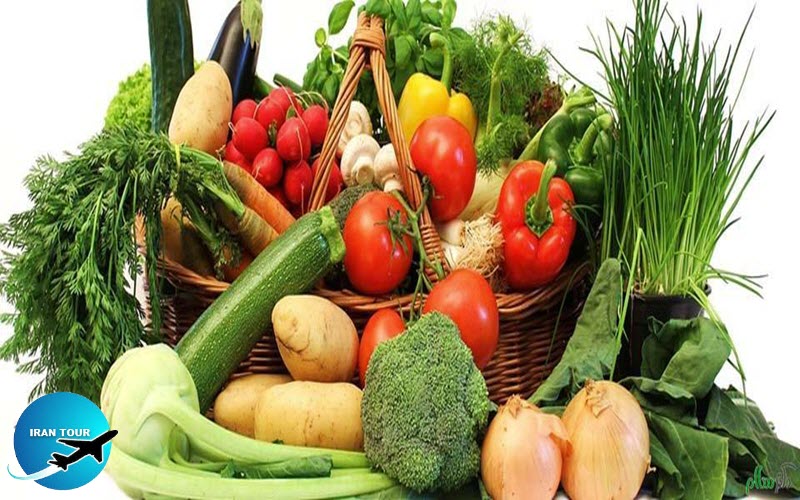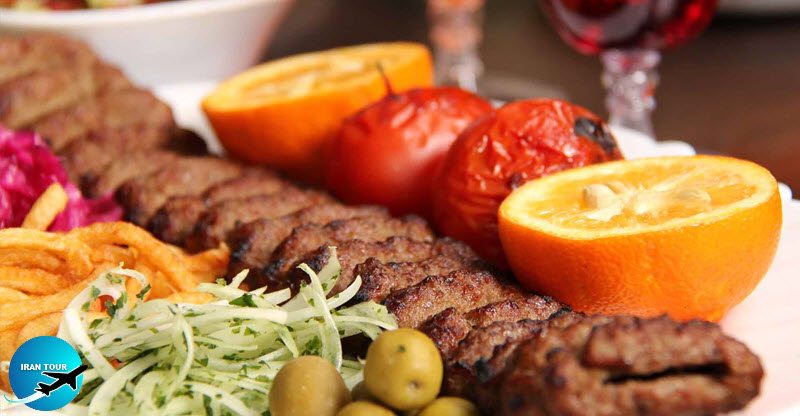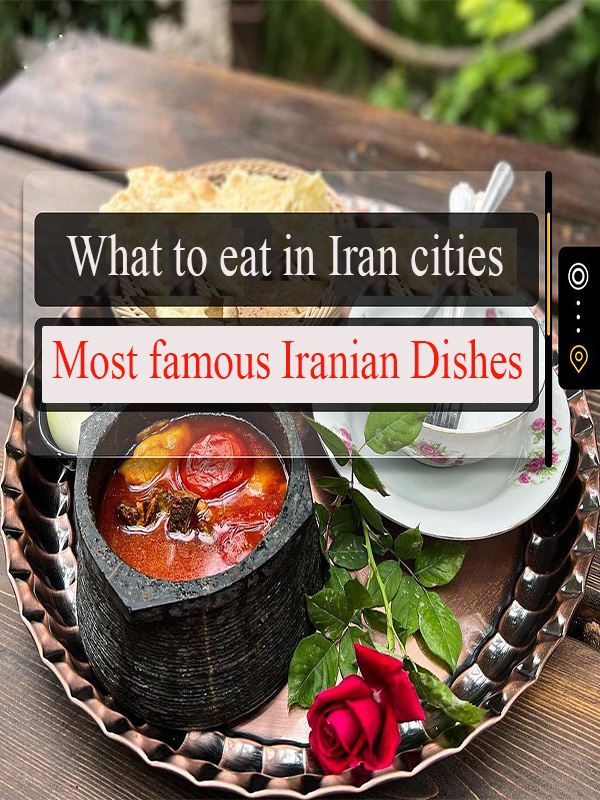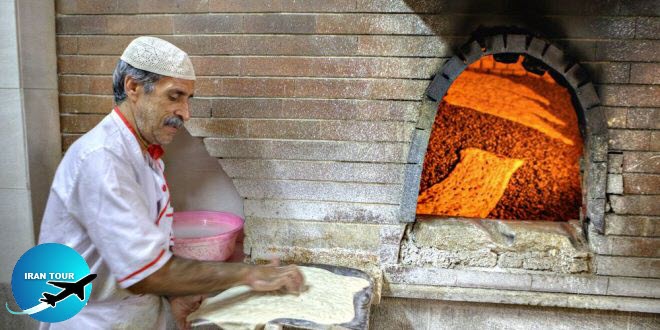Copyright 2020 - 2021 irantour.tours all right reserved
Designed by Behsazanhost
Iran Cuisine: The Most Delicious Iran's Attraction
Iran Cuisine: The Most Delicious Iran's Attraction
You are a true foodie who has experienced weird and wonderful culinary. The spicy dishes in India, the colorful foods in Thailand, frozen dishes in the South Pole, or even the odd grilled animals in the southeast of Asia. If you like to enjoy a glazed, luscious, fragrant, and mouthwatering dish, Iranian dishes, like a painting canvas, are too exciting and colorful to make you salivate. Iranian food with a series of appetizing Soups, well-done stews, succulent Kebabs, fluffy white rice speckled with saffron-colored grains, and colorful desserts are among the most complete menus of the world.
All you should know about Iranian cuisine and Persian Recipes
Iran Cuisine History: One of the World's Oldest Recipes
Iran is a country at the crossroads of big and historical continents, so the influence of different cultures on Iranian cooking and Iranian recipes is very clear. Although there are many intersections with Middle Eastern cuisine along this long path, Ottoman elements, Indian flavors, Zoroastrian, and Islamic culture, local ingredients, as well as a long commercial culture from China and beyond have been very effective in its formation.
The oldest Persian recipe documents, back to the Sasanian period (224–651 CE)where you can find the names of Iranian stews and dishes. Some of these names were translated into Arabic after the conquest of Iran by Muslims. The great Persian philosophers and physicians like Avicenna and Rāzī influenced Iranian food preparation too. They had extensive research on the effects of different types of food on the human body.
The oldest Iranian cookbooks
Although some Iranian cookbooks were written in the Arabic language during the reign of the Abbasid Caliphate, the earliest surviving classic Persian cookbooks consist of two volumes from the Safavid period. The food recipes include measurements of ingredients, detailed instructions for preparing the dishes, including the types of utensils and pans to use, and instructions for decorating and serving them.
 |
Iranian Cuisine Style
Iranian making food is like a painting with different colorful ingredients. Sometimes, Iranian Cuisine is compared to weaving a Persian rug, they both have richness and complexity of color, texture, balance, design, patience, and most of all, love!
Iranian dishes have a mild taste but are full of flavor and aroma and rarely spicy. Persian foods are a delicate blending of fresh and dried ingredients to create rich and subtle flavors that all styles accept. Dishes often showcase a playful yet well-balanced dance of sweet and sour elements. Sour often takes center stage, with sweet, and salt, as supporting elements. Iranian food not only fulfills physical needs but also has a very important role in family culture. They respect the tablecloth and gathering around the tablecloth is necessary.
The basic ingredients of Persian cuisine
Iran is one of the 4 seasons countries in the world with various weather all over its territories. These geographic features of countries have directly influenced the ingredients and cuisine, causing Persian cuisine ingredients variety. Beef, lamb, or chicken are Iranian favorites, that mix with different vegetables, beans, nuts, and Persian white rice. This unique plate would be decorated with pure Iranian Saffron and the final result is the most delicious food to make your mouth water.
The Persian dishes and Iranian tablecloths are decorated with fresh vegetables, different hand-made sour & sweet pickles, yogurt, various salads, and fresh bread which is the blessing of the tablecloth. However, The local ingredients and their secret recipes + mothers' love for the family have the main role in making the magic and mesmerizing tastes.
 |
What are some famous Iranian dishes?
Among all Iranian dishes, some of them are more famous and popular among tourists.
Abgoosht, Chelo kabab (steamed rice and roast meat), Chelokhoresht (rice cooked with steam and stew of meat), polo (rice cooked with steam and stew) Ash-e-Reshteh (noodle soup), Baghali polo (broad bean with rice and chicken), dolmeh (meat, vegetable, pea, onion wrapped in cabbage or grapevine leave), Fesenjoon (stew with ground walnut as its main ingredient), Ghormehsabzi (vegetable stew with boiled rice), Gheymehpolo (minced meat with split peas and rice), Kashke Bademjoon (egeplant with whey), Koofteh (ball of pounded meat), Loobia polo( green bean with rice) are popular and famous foods in Iran.
The most popular foods served at homes and restaurants are Chelo Kabab-e Barg (steamed rice and lump meat) or Chelo Kabab-e Koobideh (rice and minced meat) mixed with butter. They would be more delicious with some butter, porphyry, and onion. Iranian stews consist of vegetable stew, meat, and cereal stews popularly known as Ghormesabzi or meat mixed with pea and roasted potato known as Gheimeh and Fesenjoon (walnut seed and pomegranate ketchup mixed with meat).
Abgoosht: The most favorite Iranian food
Abgousht is not only the most popular Iranian traditional food but also is the fairest food in the world. This food is prepared in special single poots with an equal proportion of raw materials for each person. The traditional Iranian Abgoosht is made of meat, potato, cereals, and spice and cooked in ample water. This fatty and delicious food is served with fresh bread & vegetables, Onion, Torshi(pickled vegetables), and the Iranian special drink" Doogh".
Soups: Iranian Appetizer
There are various soups like Ash-e Reshte (vermicelli) and Ash-e Jo (barley soup)which are considered an Appetizer and a good supplement for regular foods. These Persian soups are made of different vegetables, cereals, meats, barley or vermicelli, and water. Although they look simple, but need much skill to cook and produce the desired flavor. As a result, the soups are often cooked by old and experienced Iranian women.
How to Cook Persian Chelo(Rice)
To cook polo or Chelo you must pour the rice into boiled water and let it boil evenly. Then you take it out of the water and wash it with cold a t it cooks on the cooker with a soft flame to make it completely soft. But you must make sure that the rice seeds do not stick to each other. Meanwhile, vegetables, onion, salt, pepper, yogurt, bread, and water are served with Iranian foods.
 |
Regional Iranian cuisine
Different parts of Iran have their private recipes and local techniques for cooking Persian foods.
North of Iran
In the north of Iran, the inhabitants cook many local dishes with or without meat with the help of vegetables and cereals. Although the neighborhood with the world's largest lake has allowed them to enjoy various fishes and the world's best Kaviar.
Southern Provinces of Iran
Different sorts of fish are cooked in the north and south of Iran. The shrimp is the most famous and best seafood in the Persian Gulf. The locals have their secret recipes to make it. Various soups are made of vegetables, cereals, and sometimes meat.
West of Iran
In the west of Iran especially in Tabriz city, the Dolmeh & Tabrizi Koofte (Tabriz Meatballs), and Baghlava(dessert) are the most famous and tasty foods with similar Turkish ones.
Central Of Iran
The central cities of Iran with a wide variety of food and local recipes play a very important role in the history of Iranian cuisine. All kinds of kebabs, stews, and local desserts form an important part of Iran's food diversity.
 |
Iranian Traditional Bread
The blessing of the Iranian tablecloth, and is the predominant food of most Iranians. Bread has a very special position among Iranians and they respect it a lot. Almost, all Iranian food is served with bread. Therefore, there are different kinds of traditional Iranian bread served with food. Breads in Iran are cooked in different manners. Iranian breads are mostly thin and are baked on the surface. They are very soft and people eat them fresh from the bakery.
The most famous Iranian Breads are:
Barbari: Known as an Azari Bread
It is a large loaf of bread branded on burned stones and mixed with poppy seed.
Taftoon: A round toasted loaves of bread
Sangak: A bread baked on heated pebbles.
Lavash: The thinnest bread with a long shelf life.
Iranian beverages: Herbal and healing
Iranian Beverages are Non-Alcoholic, Herbal, and useful for the body. The most famous Iranian Beverages is Doogh. Doogh which is called by some the “Persian coke”, is a mixture of water, yogurt, and salt. For making a new taste can add mint or other local vegetables.
- Details
- Category: IRAN Blog